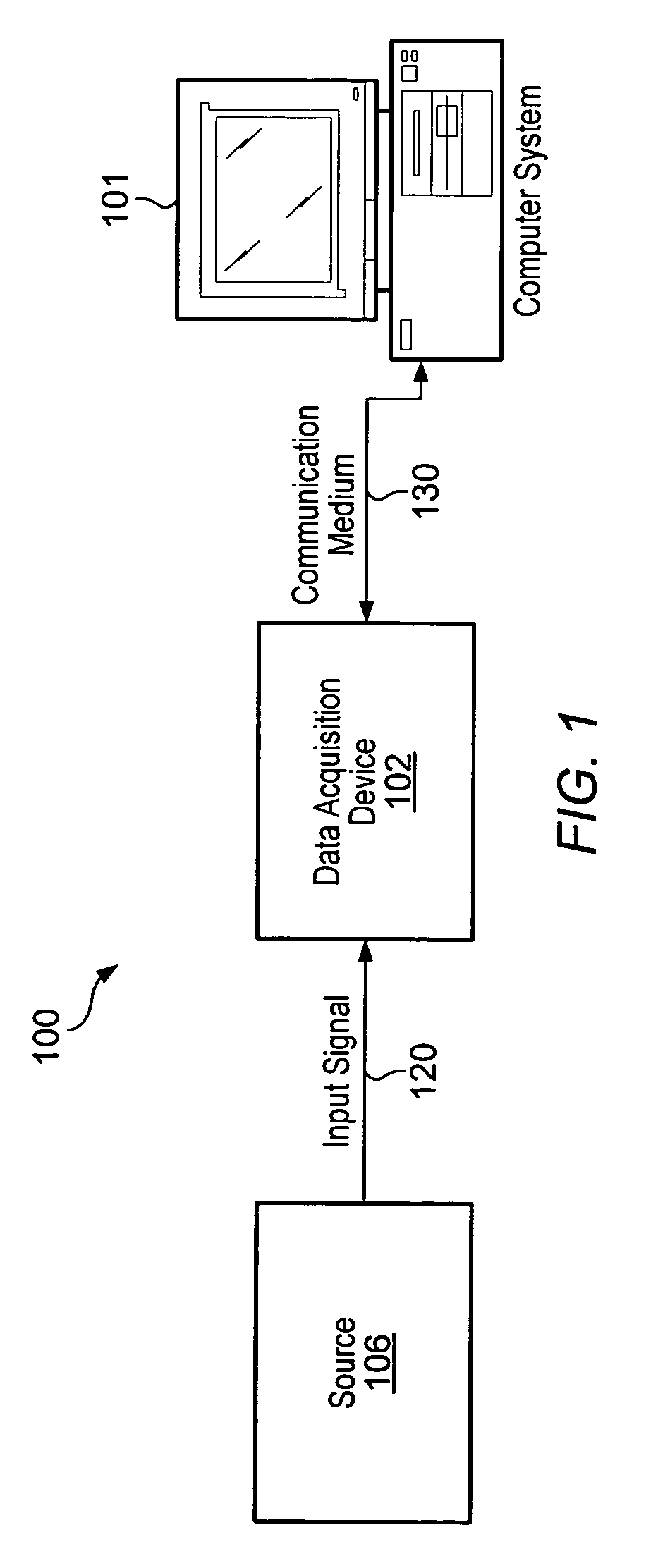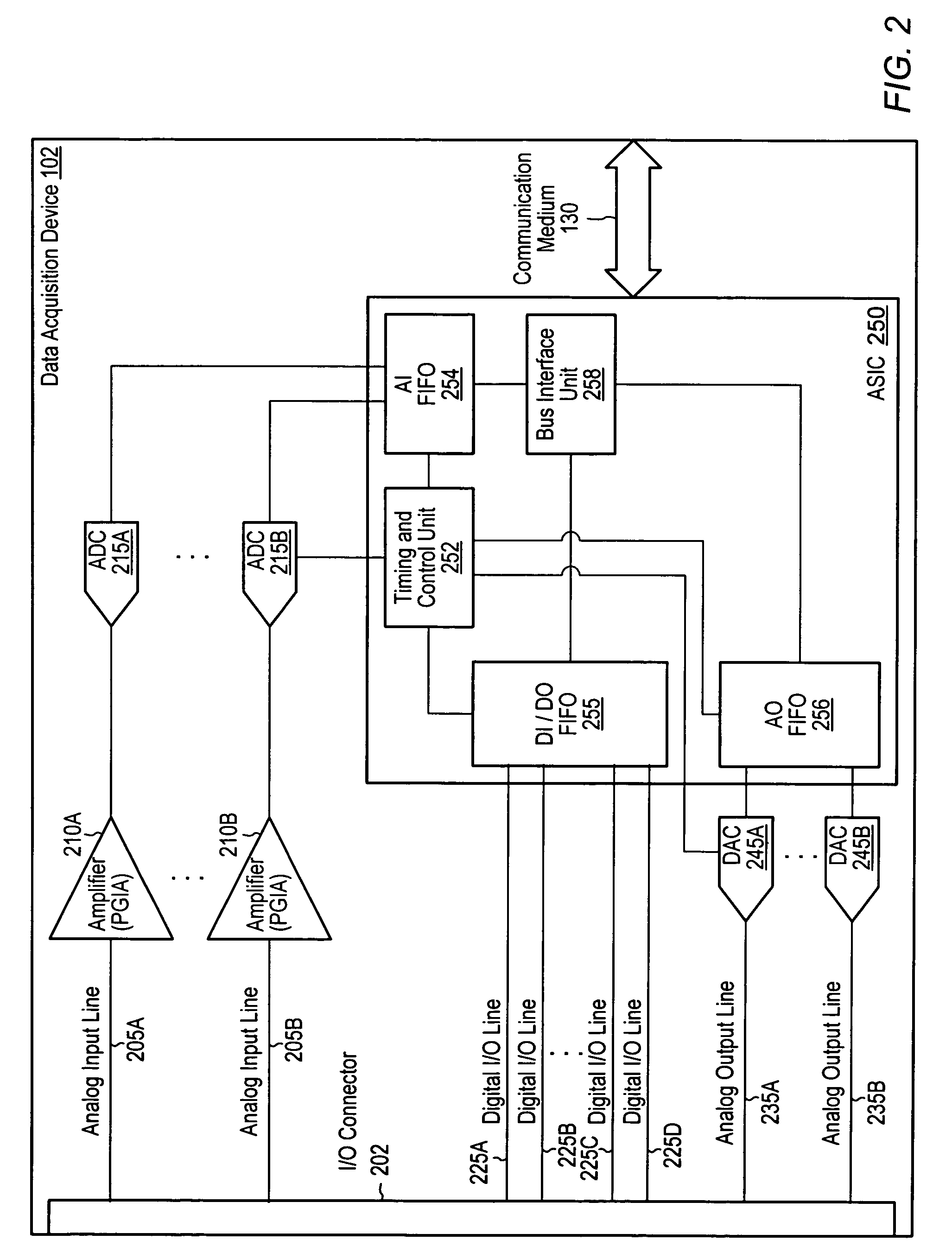Programmable gain instrumentation amplifier including a composite amplifier for level shifting and improved signal-to-noise ratio
a level shifting and amplifier technology, applied in the direction of differential amplifiers, amplifiers with semiconductor devices/discharge tubes, amplifiers, etc., can solve the problems of low signal-to-noise ratio, low signal-to-noise ratio, and low gain, so as to improve the step response of the pgia and improve the signal-to-noise ratio. , the effect of improving the signal-to-noise ratio
- Summary
- Abstract
- Description
- Claims
- Application Information
AI Technical Summary
Benefits of technology
Problems solved by technology
Method used
Image
Examples
Embodiment Construction
[0028]FIG. 1 is a diagram of one embodiment of a computer-based measurement system or data acquisition system 100. The data acquisition system 100 may comprise a computer system 101, which may be coupled to a measurement device, referred to as data acquisition (DAQ) device 102, through a communication medium 130. The DAQ device 102 may be an internal card or board coupled to a bus, e.g., a Peripheral Component Interconnect (PCI), PCI Express, Industry Standard Architecture (ISA), or Extended Industry Standard Architecture (EISA) bus, but is shown external to the computer 101 for illustrative purposes. The measurement device or DAQ device 102 may also be an external device coupled to the computer system 101. In this embodiment, the communication medium 130 may be a serial bus, such as USB, IEEE 1394, MXI bus, Ethernet, or a proprietary bus, or a parallel bus such as GPIB or others. It is noted that the communication medium 130 may be a wired or wireless communi...
PUM
 Login to View More
Login to View More Abstract
Description
Claims
Application Information
 Login to View More
Login to View More - R&D
- Intellectual Property
- Life Sciences
- Materials
- Tech Scout
- Unparalleled Data Quality
- Higher Quality Content
- 60% Fewer Hallucinations
Browse by: Latest US Patents, China's latest patents, Technical Efficacy Thesaurus, Application Domain, Technology Topic, Popular Technical Reports.
© 2025 PatSnap. All rights reserved.Legal|Privacy policy|Modern Slavery Act Transparency Statement|Sitemap|About US| Contact US: help@patsnap.com



